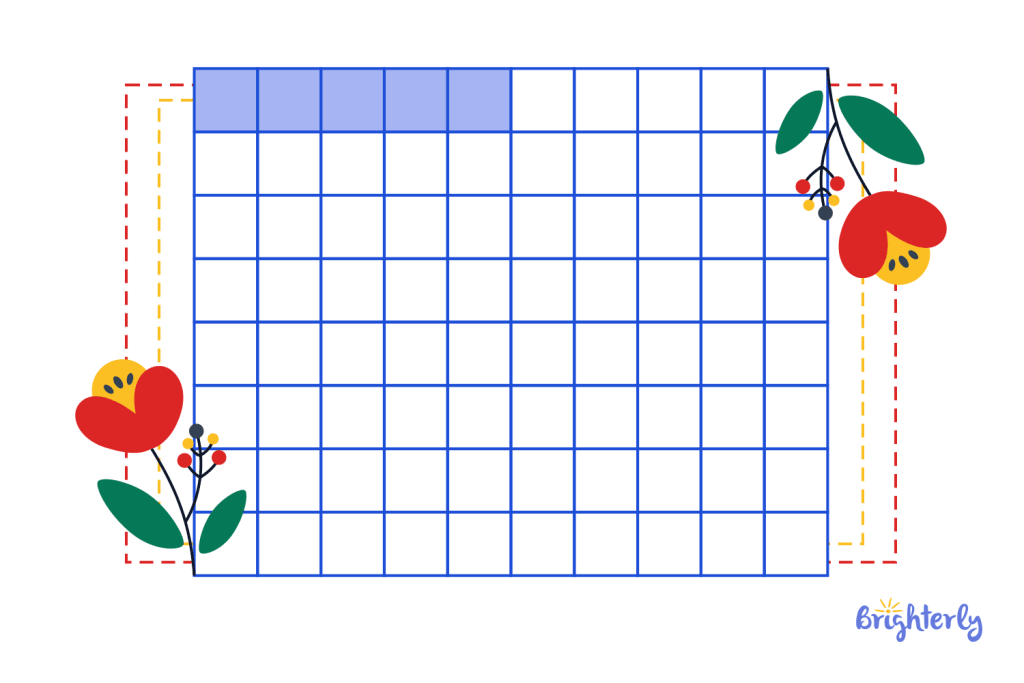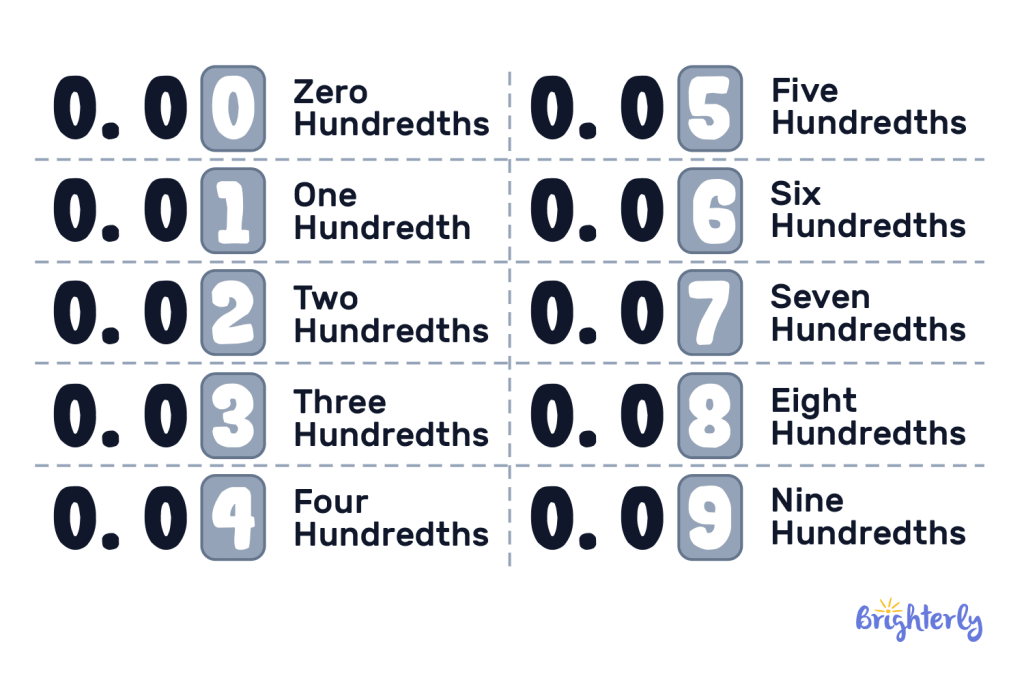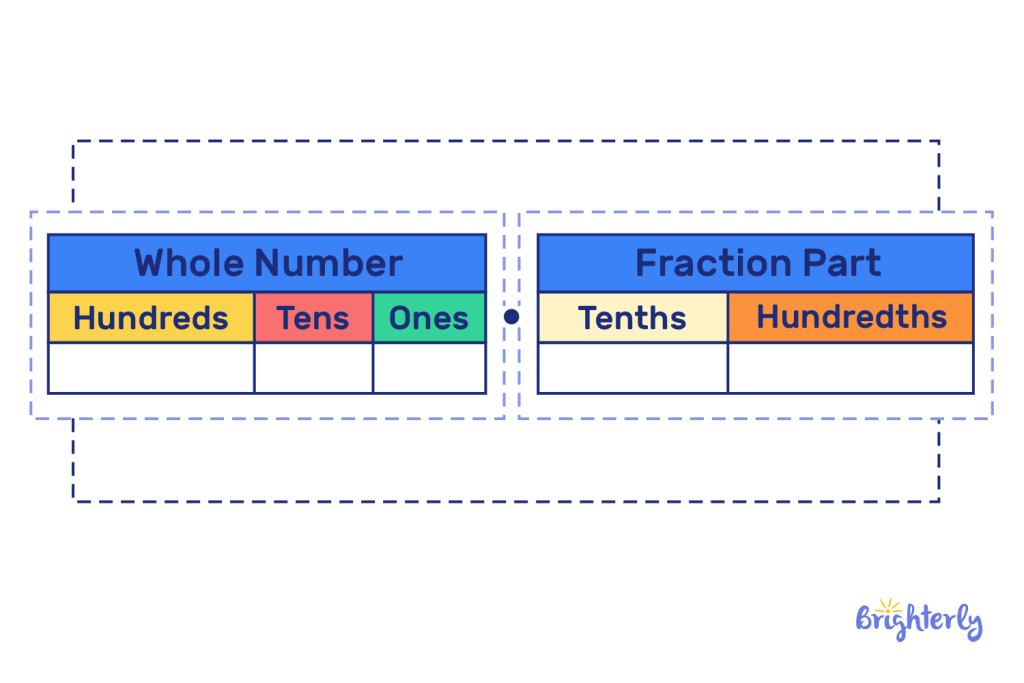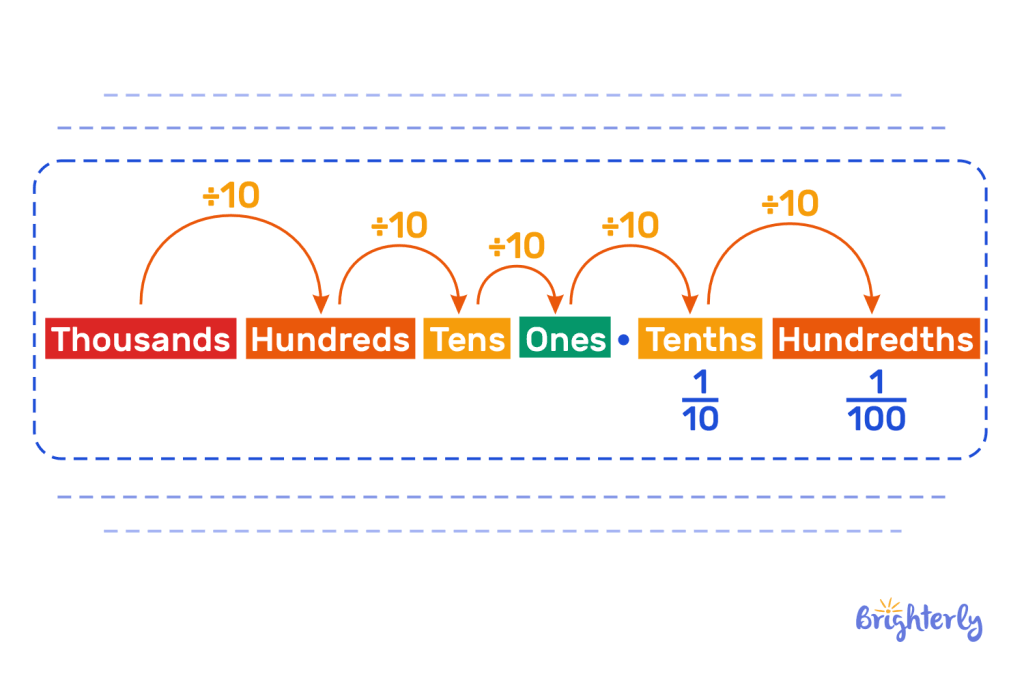One-Hundredth – Definition With Examples
reviewed by Jo-ann Caballes
Updated on October 28, 2024
Welcome to Brighterly, where we cover all types of math concepts to make them straightforward to understand and enjoyable to work with.
Today, we’re going to dive into the world of decimals and cover one-hundredth!
Learning how these decimals work is fundamental to understanding whole numbers and parts of numbers. They can help you get to grips with fractional parts of a whole. It can be used in a range of ways, from calculating parts of an item to working out 100th of a second.
Here, we’ll be covering the hundredth definition and the hundredths place value, the difference between hundredths and hundreds and where the hundredth place is. We’ll also share engaging math worksheets and practice problems so you can hone your knowledge!
What is the hundredths place?
The hundredth place represents a position in a number after a decimal point. Decimals are used when we’re working with numbers that are not integers (whole numbers) and can also represent percentages and fractions if the number is below 0.
A hundredth represents a number that can be broken up into one hundred parts, and how many of those hundred parts we have. For example, 5 hundredths as a decimal is 0.05, which represents 5 parts of a whole of 100.

Hundredths place value
As the hundredth place value is two places after the decimal point, it represents one one-hundredth of the whole. It can also be expressed as a fraction in 1/100 or as a percentage in 1%.
As our place values get larger, they’ll move to the left, whereas if they get smaller, they’ll move to the right. Whole numbers will be represented to the left of the decimal point, whereas fractional numbers (aka decimal numbers) will be represented to the right of the decimal point.
Place values are really important to understand in math, so we’ve provided a ones tenths hundredths chart to show you how place values work.
Value |
Place value |
| Millions | 1,000,000 |
| Hundred thousands | 100,000 |
| Ten thousands | 10,000 |
| Thousands | 1,000 |
| Hundreds | 100 |
| Tens | 10 |
| Ones (or the whole) | 1 |
| Tenths | 0.1 |
| Hundredths | 0.01 |
| Thousandths | 0.001 |
| Ten thousandths | 0.0001 |
| Hundred thousandths | 0.00001 |
| Millionths | 0.000001 |
Hundredths and hundreds: difference
The difference between hundredths and hundreds lies in their value.
A hundredth represents one one-hundredths of the whole – so if we have a jigsaw puzzle with 100 pieces, one piece would represent a hundredth. Because a hundredth is a fractional number, its value is below 0, so it comes after the decimal point. If we take the example of 3629.042, which has both a hundred and a hundredth place, 4 is our hundredth place value.
Hundreds, meanwhile, are a larger number that represent 100 whole parts. In our jigsaw puzzle, 100 would be our hundreds value, because it represents 100 whole parts of the jigsaw puzzle. If we again take the example of 3629.042, the 6 is in the hundreds place.
Where is the hundredth place in a decimal?
So, where is the hundredths place? The hundredth place decimal is the second place after the decimal point. So if we have the number of 34.1938, the 9 is in the hundredth place in the decimal.

Hundredth place as a percentage
The hundredth place decimal can easily be expressed as a fraction because it represents 1% of a whole – in other words, it represents one part of 100. If we have decimals that only go up to the hundredth place, i.e. they don’t have more than two decimal places, they can be translated into fractions simply by being multiplied by 100.
Let’s say we have 0.93 as our decimal number. To get our percentage, we multiply that by 100. 0.93 x 100 = 93%.
Hundredth place as a fraction
The hundredth place decimal can also be represented by a fraction because it is a fractional number. If we have numbers where the hundredth place is the last number, i.e. they don’t have more than two decimal places, our denominator will be 100.
Let’s take 0.45 as an example. To turn this into a fraction, we multiply 0.45 by 100 to create our numerator, then add 100 as our denominator. This number becomes 45/100 as a fraction.
If your numbers have common factors, you can then simplify this fraction – we know 5 is the highest common factor (HCF) of both numbers, so 45/100 becomes 9/20.
How many hundredths are in one-tenth?
In one-tenth, there are 10 hundredths. For each decimal point, we move one place. So one would be the number before the decimal point, representing the whole. One-tenth would be represented as 0.1, whereas one one-hundredth would be represented as 0.01.
The tenth and hundredth place are consecutive, meaning the hundredth place comes after the tenth place.

Solved math tasks: examples
Are you ready to test your knowledge on one-hundredths with some math tasks? We’ve provided these solved problems to get you started – simply work out your answers then check them against our answers. How many can you get right?
Solved math task 1
Identify the hundredth place in the following numbers:
- 0.042
- 13.683
- 105.921
Answer:
The answers are as follows:
|
That’s because the hundredth place value is always the second place after the decimal point.
Solved math task 2
Express the following values as decimal numbers:
- Six and seventeen one-hundredths
- Thirty one-hundredths plus twelve one-hundredths
- Seven and ninety-nine one-hundredths
Answer:
The answers are as follows:
|
Solved math task 3
Express the following fractions as decimal numbers:
- 5/100
- 23/100
- 48/100
Answer:
The answers are as follows:
|
One-hundredth: practice math problems
One-hundredth: worksheets
Now that you know what a one-hundredth is and what it represents, it’s time to put that knowledge into practice – try out our exciting free math worksheets to practice your knowledge and become a master of hundredths and decimals!
- Fractions, decimals and percentages worksheets
- Decimal to percentage worksheets
- Counting worksheets
- Decimal place value worksheets





